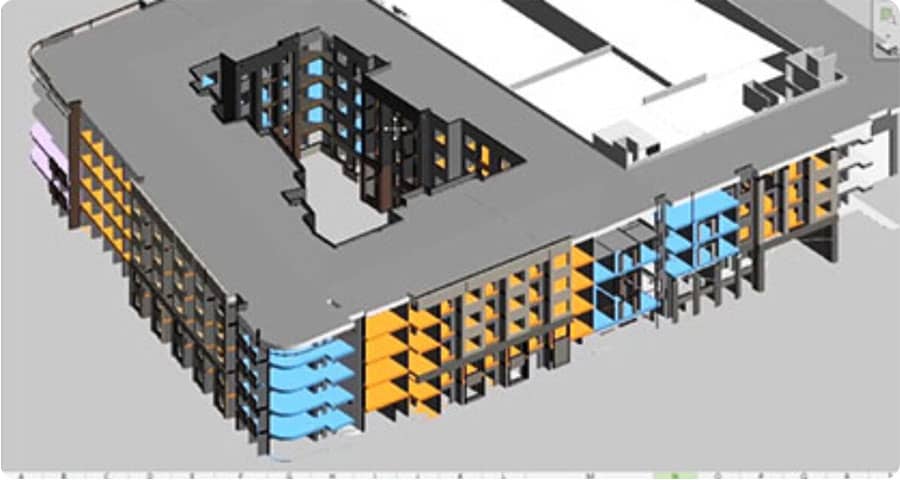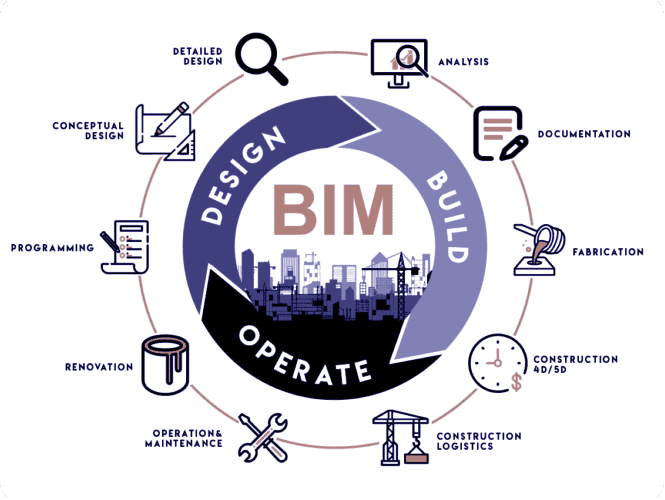
Building Energy Optimization Service in BIM
The construction industry is a significant contributor to global energy consumption. Building Information Modeling (BIM) offers a powerful platform to integrate design, construction, and operational data, enabling a data-driven approach to building energy optimization.
This service leverages BIM to create Building Energy Models (BEMs) that simulate a building's energy performance throughout its lifecycle. By analyzing various design options and operational strategies, this service helps achieve significant energy savings, leading to reduced costs, improved occupant comfort, and a minimized environmental footprint.
Building Information Modeling (BIM) for Building Energy Modeling (BEM)
BIM goes beyond traditional 3D modeling by incorporating rich data about building components, materials, and systems. This data-rich environment is crucial for creating accurate BEMs. BIM software allows users to define physical properties of building elements like walls, windows, and roofs.
These elements are then linked to their corresponding energy properties like thermal resistance and solar heat gain coefficient. Furthermore, BIM facilitates the integration of building systems like HVAC (Heating, Ventilation, and Air Conditioning) and lighting. This comprehensive data set within the BIM model empowers the creation of a reliable BEM.
Energy Optimization Process
The building energy optimization service employs a systematic process to identify and implement energy-saving measures. Here's a breakdown of the key steps:
- Data Collection and Model Creation: Existing building plans, equipment specifications, and operational data are collected and integrated into the BIM model. This data serves as the foundation for the BEM.
- Baseline Model Development: The initial BEM, representing the proposed design or existing building, is created. This baseline model serves as a benchmark for evaluating the effectiveness of energy-saving measures.
- Performance Analysis: The BEM software simulates the energy consumption of the building under various conditions, such as weather patterns, occupancy schedules, and equipment operation. This analysis identifies areas where energy consumption can be reduced.
- Design Optimization: Based on the performance analysis, various design alternatives are explored within the BIM model. These alternatives might include modifications to building envelopes, HVAC systems, lighting systems, or incorporation of renewable energy sources.
- Cost-Benefit Analysis: The energy savings potential and implementation costs associated with each design alternative are evaluated. This analysis helps prioritize the most cost-effective energy-saving measures.
- Implementation and Monitoring: The chosen energy-saving measures are implemented during construction or retrofitting. After implementation, the building's actual energy consumption is monitored and compared to the optimized BEM. This ongoing monitoring helps ensure the effectiveness of the implemented strategies and identify further optimization opportunities.
Benefits of Building Energy Optimization Service
Building owners and operators can reap numerous benefits from this service:
- Reduced Energy Costs: By identifying and implementing energy-saving measures, this service contributes to significant reductions in energy consumption, leading to lower operational costs.
- Improved Sustainability: Energy optimization translates to a smaller environmental footprint for the building. This aligns with growing demands for sustainable design and construction practices.
- Enhanced Occupant Comfort: Optimized building systems can create a more comfortable and healthy indoor environment for building occupants.
- Informed Decision-Making: The data-driven approach offered by BEM empowers informed decision-making throughout the building lifecycle, from design to operation.
- Extended Building Lifespan: Proper energy management can help extend the lifespan of building components and equipment by reducing wear and tear.
Future Trends: Machine Learning and IoT Integration
The future of building energy optimization lies in leveraging advancements in Machine Learning (ML) and the Internet of Things (IoT). ML algorithms can analyze vast amounts of building data from sensors and meters to identify patterns and predict energy consumption trends. This allows for proactive optimization strategies and real-time adjustments to building systems.
IoT integration enables real-time monitoring and control of building systems. Sensors embedded within the building can collect data on temperature, humidity, occupancy, and equipment operation. This data can be fed into ML algorithms for continuous optimization and automated adjustments to building systems for peak efficiency.
Why Choose Our Building Energy Optimization Service with BIM?
In addition to the general benefits of building energy optimization outlined previously, here are some compelling reasons to choose our specific service:
- Unmatched Expertise: Our team consists of BIM specialists, building energy modeling professionals, and experienced engineers. This combined expertise ensures a holistic approach to optimizing your building's energy performance.
- Advanced Technology Stack: We utilize cutting-edge BIM software and industry-leading BEM tools to create the most accurate and dynamic building energy models.
- Customizable Solutions: We understand that every building is unique. We tailor our approach to your specific needs and goals, considering factors like building type, climate, and budget.
- Focus on ROI: We prioritize solutions that deliver a strong return on investment (ROI). Our cost-benefit analysis helps you make informed decisions about energy-saving measures.
- Streamlined Workflow: Our BIM-based approach integrates seamlessly with your existing design and construction processes, minimizing disruption and maximizing efficiency.
- Ongoing Support: We offer ongoing support throughout the building lifecycle, from initial design optimization to post-construction monitoring and verification.
- Data-Driven Insights: We provide comprehensive reports and visualizations that clearly communicate the energy-saving potential of different design options. This empowers you to make informed choices.
- Future-Proof Design: Our approach incorporates considerations for emerging technologies like ML and IoT, ensuring your building is adaptable and efficient for years to come.
Conclusion
Building energy optimization services powered by BIM offer a comprehensive and data-driven approach to achieving significant energy savings in buildings. By leveraging BIM, BEM, and advanced technologies like ML and IoT, building owners and operators can create sustainable, cost-effective, and occupant-centric buildings.
By choosing our building energy optimization service with BIM, you gain a trusted partner dedicated to helping you achieve significant and sustainable energy savings in your building project.

